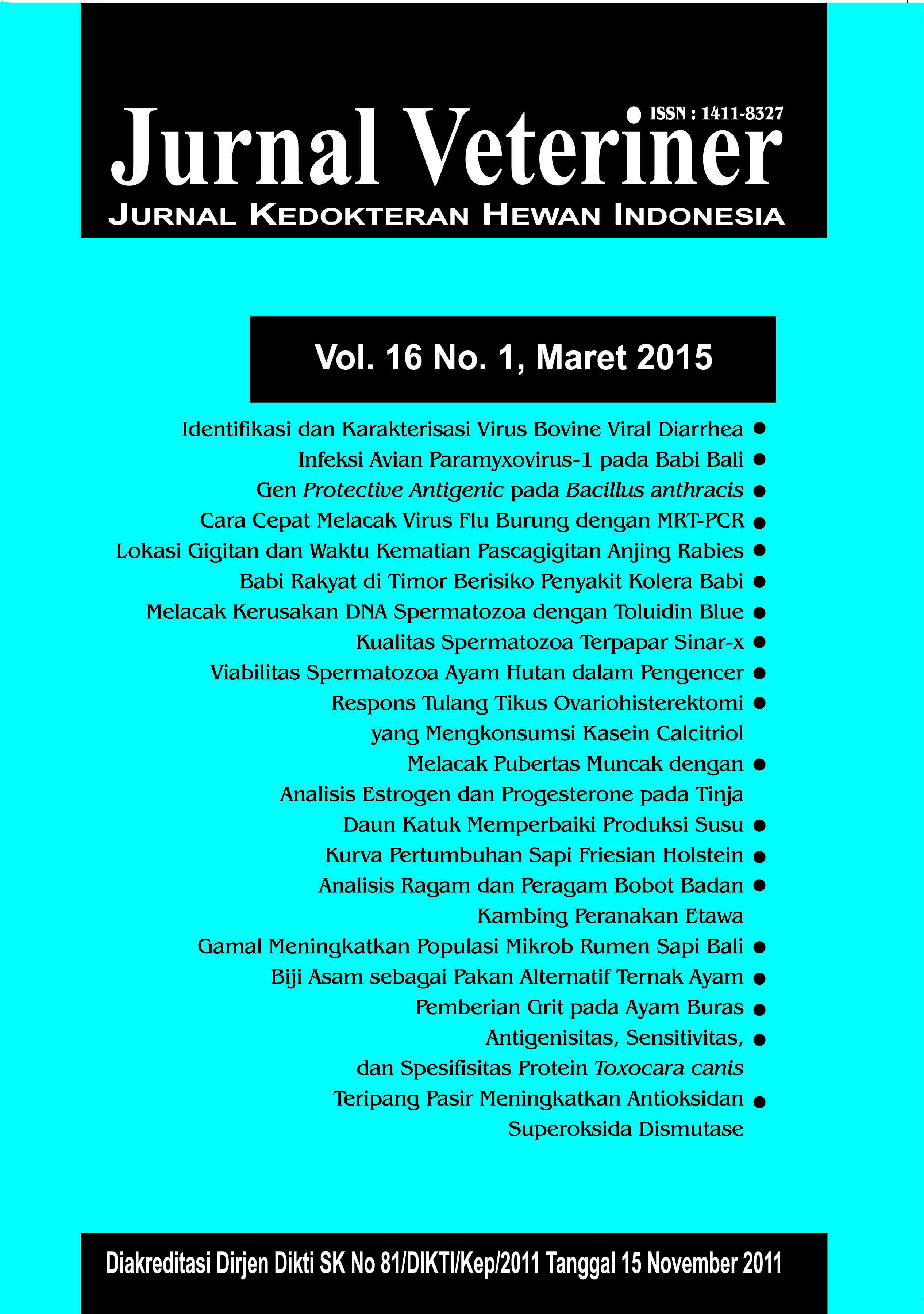Lokasi Gigitan Secara Anatomi dan Waktu Kematian Pascagigitan Anjing Rabies pada Korban Manusia di Bali (THE ANATOMICAL LOCATIONS OF BITE AND THE TIME OF DEATH IN HUMAN VICTIMS BITTEN BY RABIES INFECTED DOGS IN BALI)
Abstract
Rabies was a new emerging disease in Bali. After the first case of rabies in 2008 there were morethan one hundred of human victims in Bali. The aim of this study was to report the anatomical locationof human body bitten by rabies infected dogs in Bali, and also the day of victims death after the bitten. Aretrospective cross-sectional review of rabies incidences from September 2008 to the end of 2011 was usedin this study. A total of 122 rabies human victims data were used as a population sample. The data on theprofiles of individuals victim were colected , such as the age, gender, living place, anatomical bite site onhuman body, bite date, and type of biting animal. The obtained data were analyzed using descriptiveanalysis. The result showed that the anatomical location of human body that bitten by rabies infected dogwas occurred on leg (52%), hand (32%), body (6%), and head (4%). Of 122 victims, 61.5% were men and38.5% were woman. The death time of the human rabies victims in average occurred at day 95th after thebite date, and time of the victims death depended on the anatomical location of the bite. Bite that occurredon the head caused death in average on day 19th, on the body on day 83th, on the hand on day 122nd, and onleg on day 166th. In conclusion, the most victims of human rabies in Bali was men and the death was foundoccurred on day 95th after the bite date. The bite at the head caused death more quickly than the other partof human body.



















